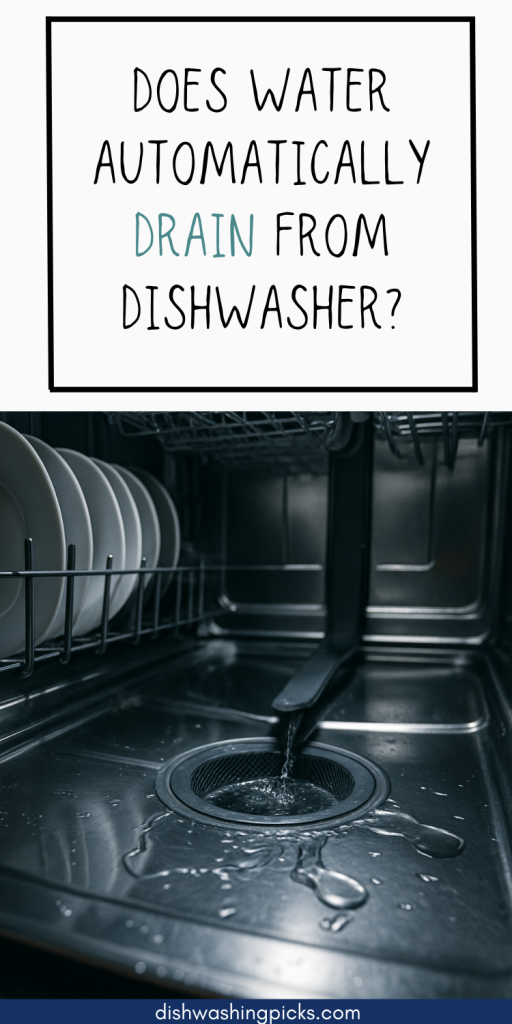
That Puddle Isn’t a Mystery
Ever opened your dishwasher after a cycle and spotted a suspicious pool of water at the bottom? You might’ve wondered, “Wait… is that supposed to be there?”
It’s a fair question—and the answer can be both reassuring and enlightening. Dishwashers seem like magic boxes that take your mess and make it disappear. But behind that magic? There’s plumbing, pumps, and a whole lot of timing.
Let’s break down what actually happens during a cycle—and whether your dishwasher is supposed to handle drainage on its own (spoiler: it usually does).
Yes, Dishwashers Are Designed to Drain Automatically
First things first: yes, dishwashers are built to drain water all by themselves. No manual bucket-dumping required (thank goodness).
Here’s what’s going on behind that door:
- After the rinse or wash cycle, your dishwasher uses a drain pump to push the dirty water out.
- That water usually flows through a drain hose connected to your sink’s plumbing or garbage disposal.
- Once the pump kicks in, it does the heavy lifting—removing nearly all the water.
So in a normal cycle, when all parts are working right, you shouldn’t have to do anything. The system handles it all, like a self-cleaning kitchen assistant.
Why Is There Some Water Left at the Bottom?
Ah, here’s where people start to second-guess things. You might open the dishwasher and see a little water still lingering under the bottom rack.
Here’s the deal:
A small amount of water at the very bottom (in the drain sump) is actually normal. It’s there to:
- Keep the pump seals moist (so they don’t dry out and crack)
- Prevent the pump motor from running dry next cycle
- Block smells from creeping up the drain
So if it’s just a thin layer—like, under an inch—it’s probably nothing to stress about.
When It Doesn’t Drain Properly
But if you’re seeing standing water (like… a puddle deep enough to splash), then yeah, something’s up.
Here are a few common culprits:
- Clogged filter – Food gunk builds up and blocks drainage
- Blocked hose – Kinks or clogs in the drain line can trap water
- Faulty drain pump – The motor might’ve failed
- Garbage disposal connection – New disposals often have a plug you need to remove to let dishwasher water through
- Air gap issues – That little cap next to your faucet? If it’s blocked, water can back up
Try this: Next time you notice water pooling, remove the bottom rack and check the filter area. A quick clean might fix it in minutes.
Quick DIY Fixes Before You Call a Pro
Not keen on spending $150 for a service call? (Who is?)
Here are some easy things you can do yourself before dialing in backup:
- Clean the filter – It’s usually under the lower spray arm. Twist and lift.
- Check the drain hose – Look under the sink for any pinches or loops.
- Run a vinegar rinse – This can help dissolve minor clogs and gunk buildup.
- Reset the machine – Some dishwashers just need a power cycle or reset button to fix a glitch.
Pro tip: Always check your dishwasher’s manual. There’s often a section on “troubleshooting drainage problems” with diagrams and all.
Drainage Is Built-In, But Not Foolproof
So to wrap it all up—yes, dishwashers are absolutely supposed to drain water automatically.
But like anything mechanical, things can go sideways now and then. A little leftover water? Totally normal. A swampy bottom rack? Time to investigate.
The good news? In most cases, the fix is easier than you think—and doesn’t involve a wrench or a plumber’s hourly rate.
